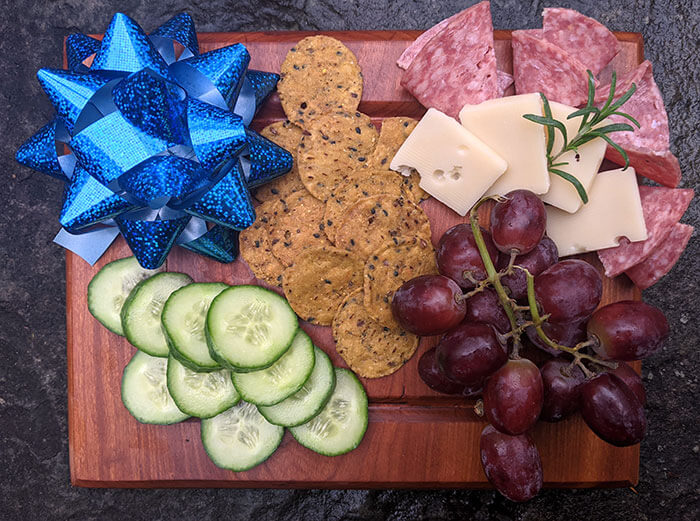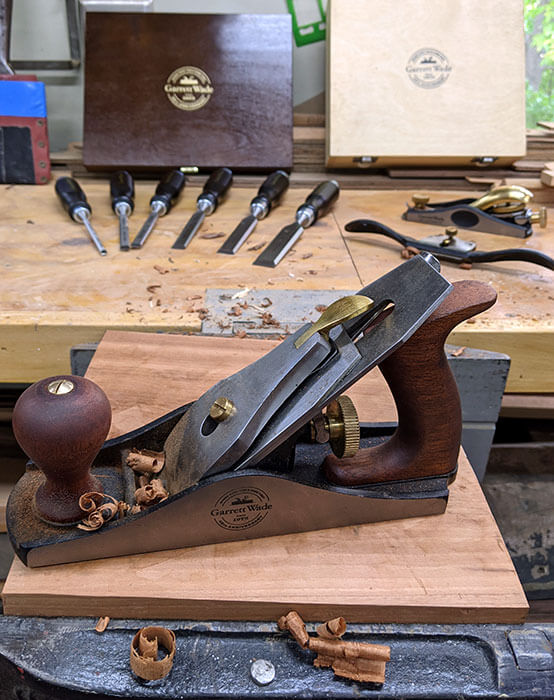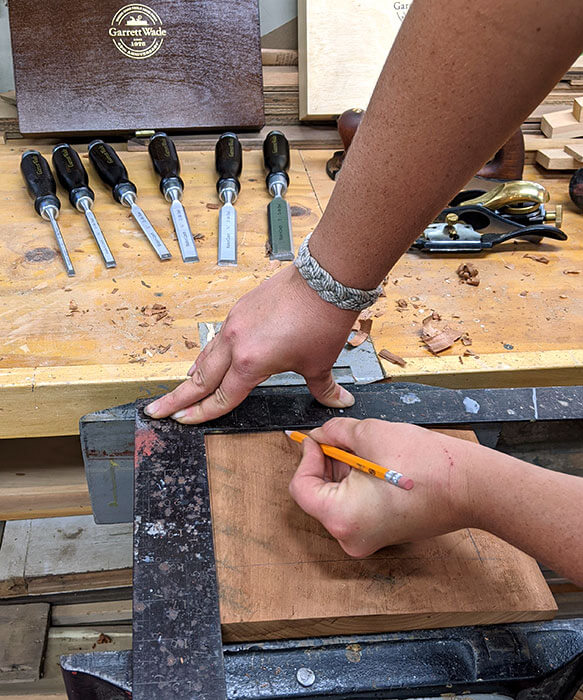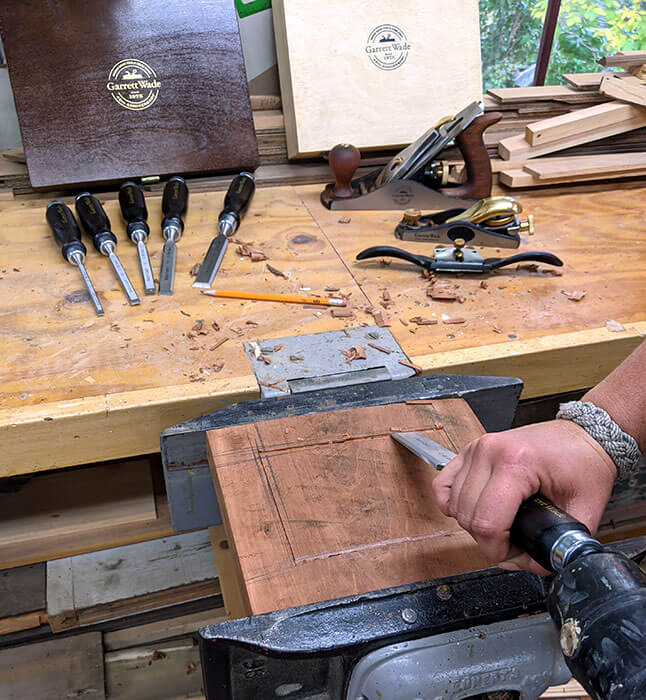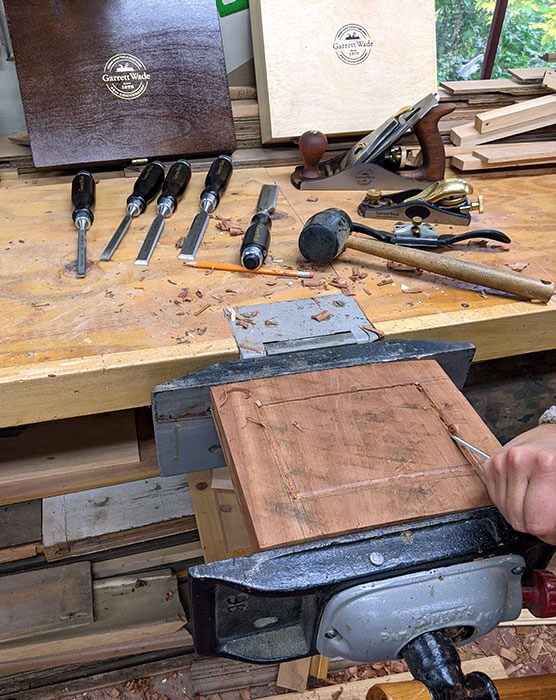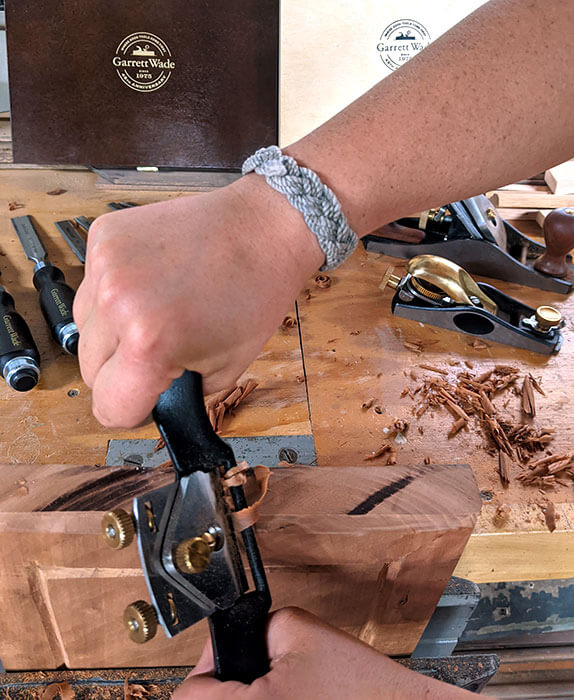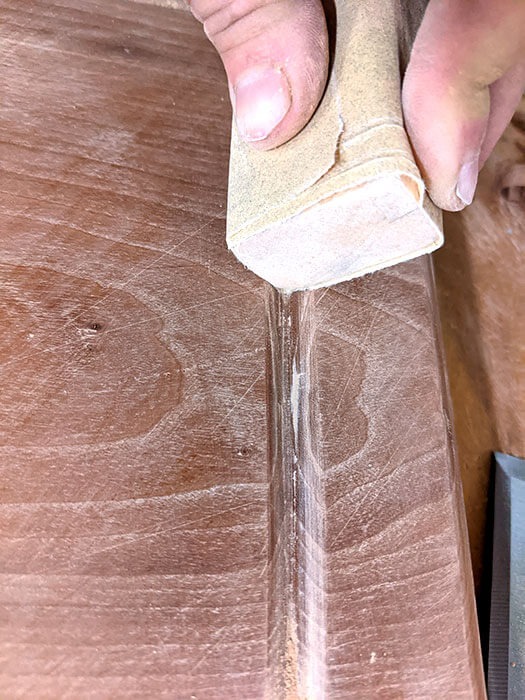Charcuterie is a French term for the process of curing meats. Charcuterie boards (for serving said meats) have exploded in popularity over the past few years. In its most simple form, a charcuterie board is a block of wood that you can pile on meats, cheeses, grapes, olives and whatever else you choose in an artful appetizer display. Also called Grazing Boards, they have been popular offerings at many restaurant and dinner parties. In 2020, these boards have become a delightful way of spicing up your work-from-home lunch or snacks. I personally have taken to preparing a charcuterie board to set on my workbench and graze on as I work on projects. Even if you can’t imagine the next time you will be hosting guests, you can still make this project and enjoy it with your household. This article explains how to make your own single-serve charcuterie board. You can use the template and steps provided to make a simple board or add any other elements that you wish. I have chosen to add a v-shaped channel for a very important reason: grapes and olives. If you have ever prepared a charcuterie board with these tasty orbs, then you know that the space between your kitchen and your living room becomes a gauntlet of focus and balance. The channel in this board is designed to stop round food from rolling off the edges so you can spend less time looking for olives on the floor of your hallway and more time eating too many types of cheese. These boards also make wonderful gifts. So, whether this project is a gift for someone or for yourself, I hope you enjoy making it!

Just Add Water
5 Watering Tips To Keep Your Garden Hydrated All Season Are you strugglin… Read More

